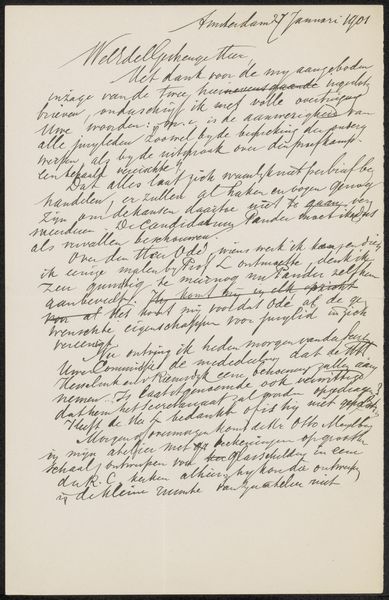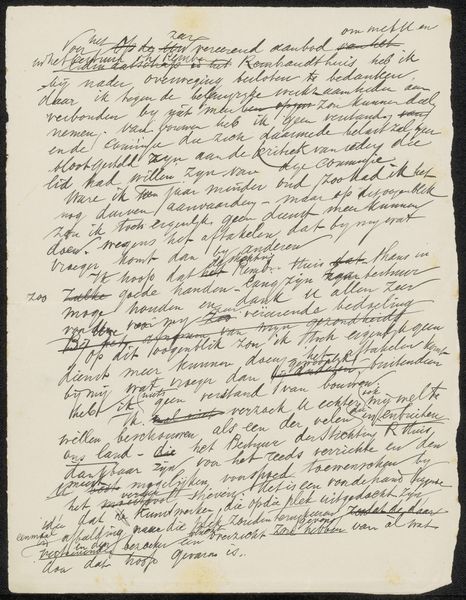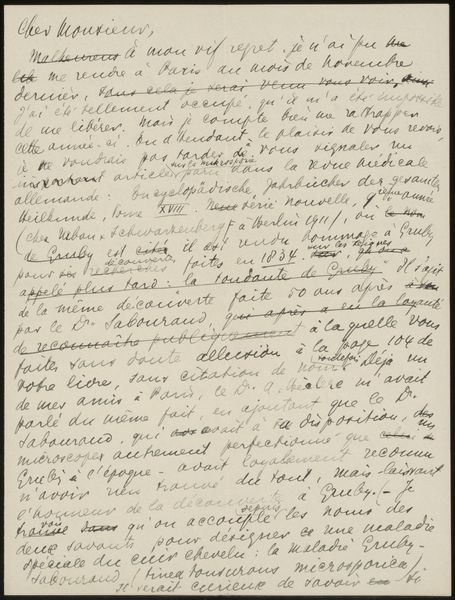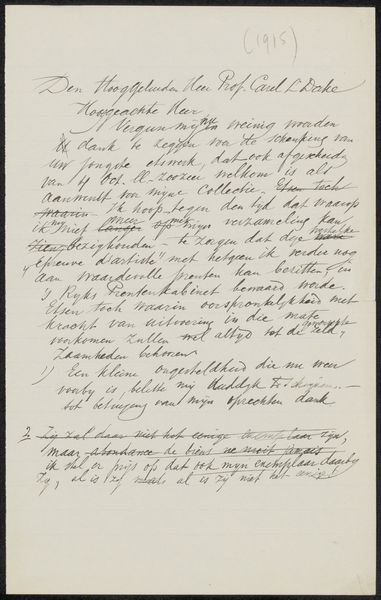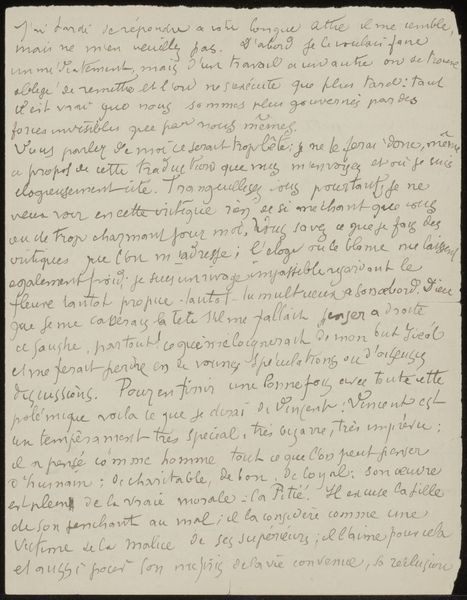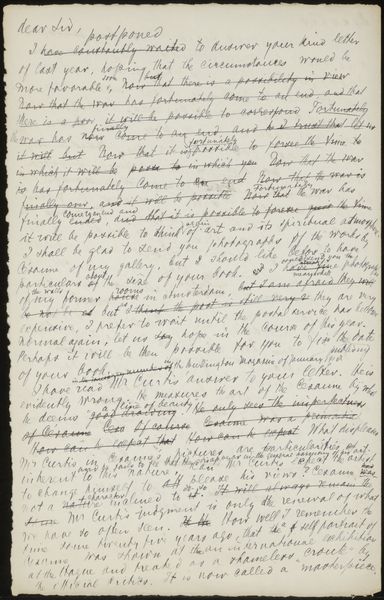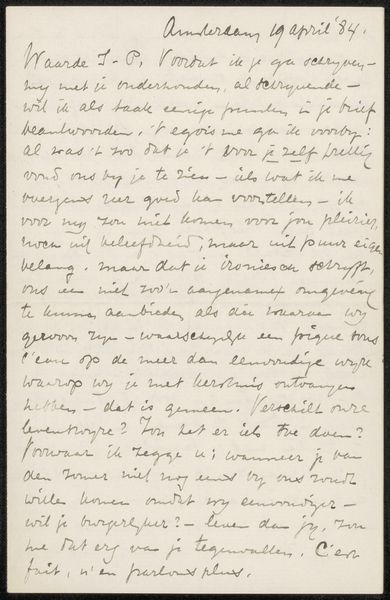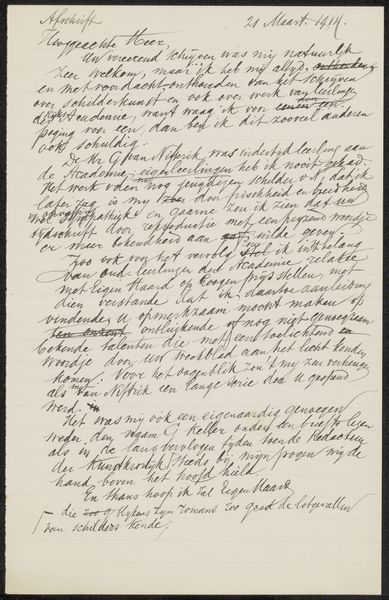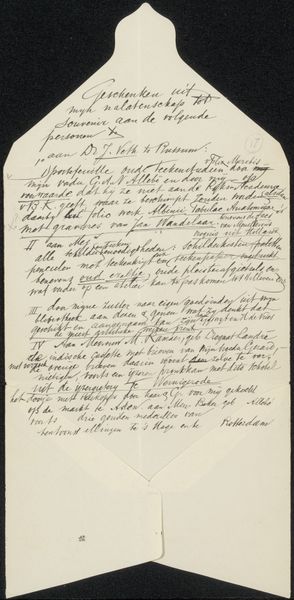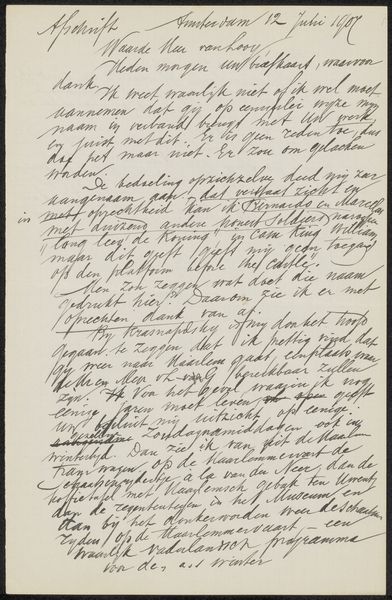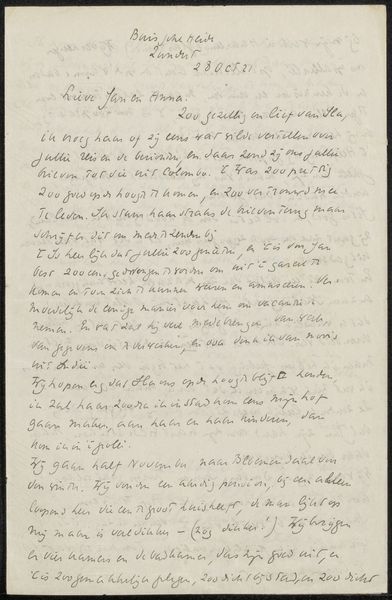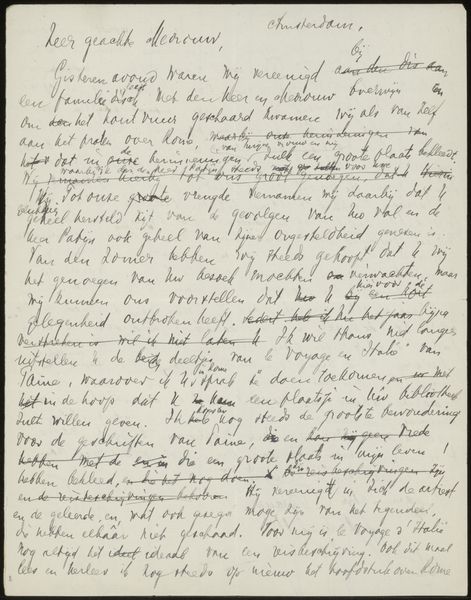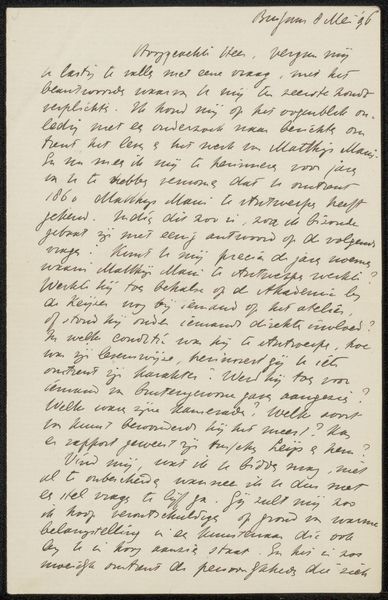
drawing, paper, ink
#
drawing
#
paper
#
ink line art
#
ink
Copyright: Rijks Museum: Open Domain
Editor: This is "Brief aan anoniem," or "Letter to Anonymous," possibly from 1916 by August Allebé. It’s an ink drawing on paper, currently held at the Rijksmuseum. It’s so dense with handwritten text; it almost feels like I'm peering into a secret world. What draws your eye, and how do you interpret this work as an historian? Curator: It is intriguing, isn't it? In terms of the politics of imagery, this piece raises questions about public and private spheres. During wartime, letter-writing became incredibly charged. This letter, ostensibly private, gains another layer of meaning when displayed publicly in a museum setting. Does it strike you as intentionally artistic or simply a personal communication? Editor: I think it seems like an intimate letter. The cursive script, the cramped lines… it all points to something heartfelt, not necessarily intended for public consumption as art. Is it possible it was displayed in the Rijksmuseum simply because Allebé was a well-known artist at the time? Curator: Exactly. Allebé held a prominent position in Amsterdam’s art scene. Think about how institutions shape our perception of what is "art." Because the Rijksmuseum, a national institution, houses it, this letter assumes a significance beyond its original intention. Editor: That’s fascinating. I hadn’t considered how the museum itself plays such a big role in defining the work’s value and meaning today. I initially saw the letter simply for its artistic quality, but placing it within the context of war, personal communication, and institutional power shifts my perspective entirely. Curator: Indeed, thinking about how socio-political forces, like war, transform the value we ascribe to things – even simple correspondence – adds so much depth to how we experience art. I wonder if the writer ever imagined his note would someday be publicly analyzed!
Comments
No comments
Be the first to comment and join the conversation on the ultimate creative platform.
